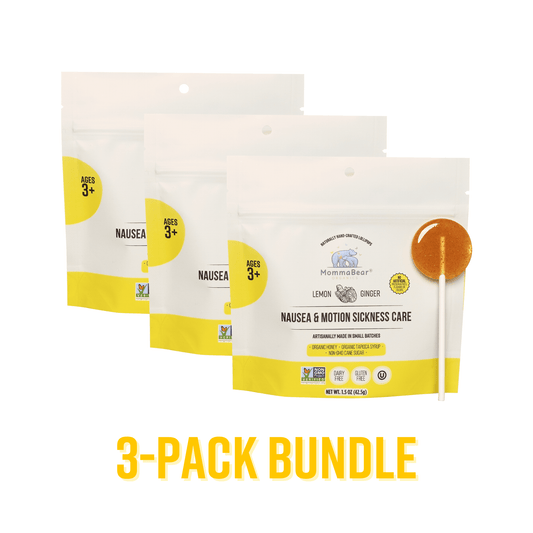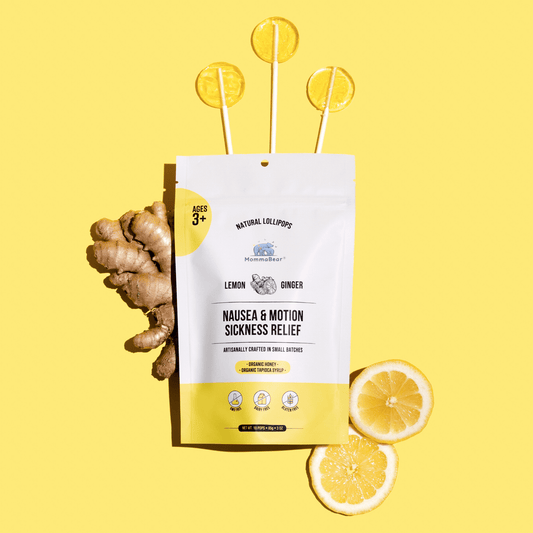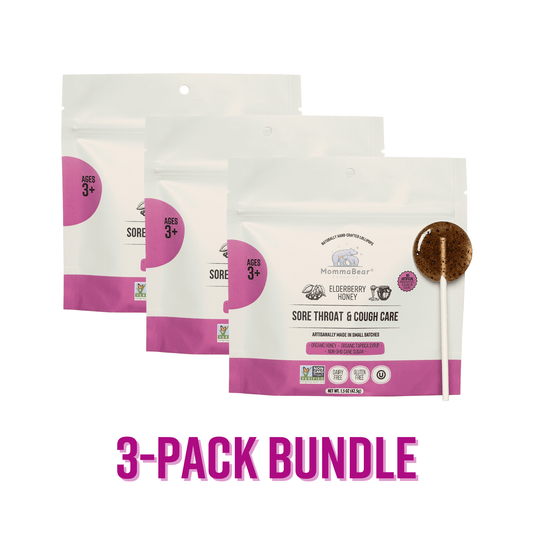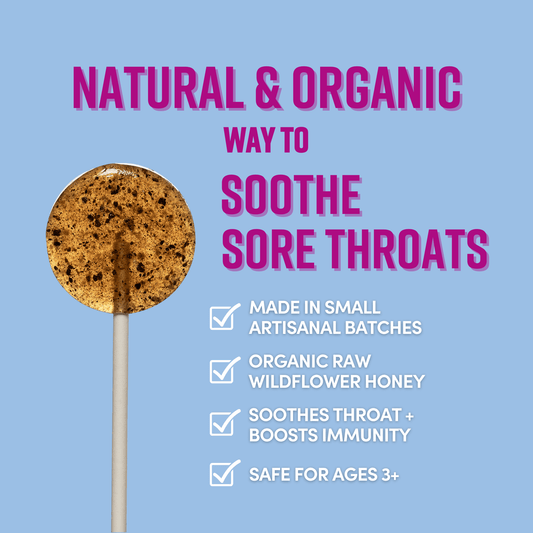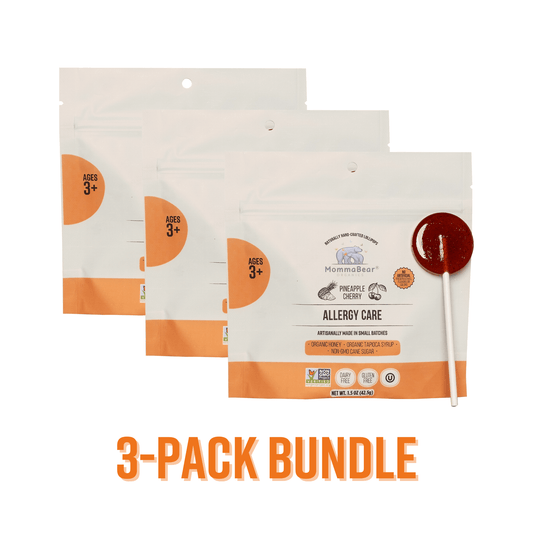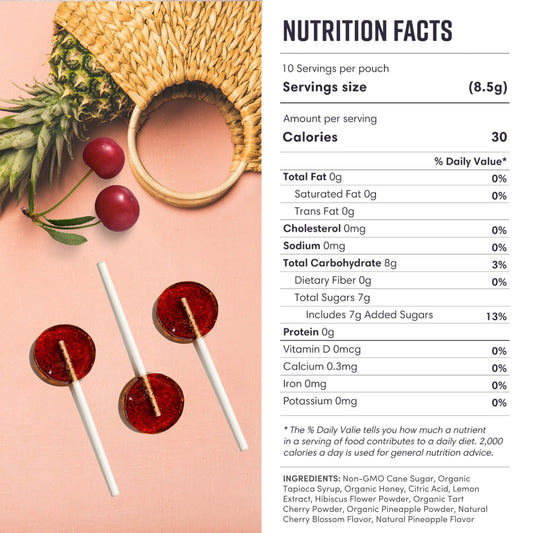Motion sickness can make travel tough for kids, especially those aged 2–12. Symptoms like nausea, dizziness, and vomiting often occur due to a sensory mismatch between the inner ear and the eyes. Genetics, seating position, and activities like reading can make it worse. But don’t worry - there are simple, natural remedies to help:
- Ginger Products: Ginger lollipops or candies can reduce nausea and vomiting.
- Acupressure Bands: Wristbands apply pressure to ease symptoms.
- Scent Therapy: Peppermint essential oil can help with nausea.
- Light Snacks: Plain crackers or bananas stabilize the stomach.
- Hydration: Small sips of water prevent dehydration.
- Fresh Air: Open windows or use air vents for better airflow.
- Meal Timing: Avoid heavy, greasy meals before travel.
Each remedy has its age suitability and benefits. Start with what works best for your child’s needs, and always monitor their reactions. Severe or persistent symptoms? Consult a healthcare provider.
Beat motion sickness with these natural remedies!
Why Children Get Motion Sickness
To explore natural remedies, it helps to first understand why children are more prone to motion sickness.
Motion sickness in kids happens because their sensory systems are still developing. The mismatch between what their eyes see, what their inner ear senses, and what their brain processes can cause discomfort. Dr. Mehul Patel from Children's Memorial Hermann Pediatrics explains that this "mismatched sensory input" is the main reason behind motion sickness in children.
Children aged 2–12 are especially vulnerable because their vestibular systems (responsible for balance) are still maturing. Interestingly, motion sickness is rare in children under two and tends to peak around age nine. As kids grow older, their sensory systems become more coordinated, and symptoms usually fade.
Certain factors can make motion sickness worse for kids:
| Trigger | Why It Matters |
|---|---|
| Backseat Position | A limited view of the horizon disrupts sensory signals |
| Screen Time | Looking at devices increases the sensory disconnect |
| Low Seating | Prevents a clear view outside the windows |
| Reading Materials | Forces the brain to process stationary visuals while the body feels motion |
Stanford Medicine Children's Health points out that the issue lies in how the brain interprets conflicting signals from the senses. For example, reading in a moving car can make symptoms worse because the inner ear senses motion, but the eyes are focused on a stationary object.
Adults and children experience motion sickness differently. Adults often avoid symptoms by driving, which allows them to anticipate movement and maintain a clear view of the road. Children, however, are usually seated in the back, where the limited view can amplify their discomfort. Understanding these factors helps shape effective remedies.
7 Natural Motion Sickness Solutions
1. Ginger Products
Ginger is a well-researched option for easing motion sickness in kids. One study showed it reduced vomiting by 20% compared to a placebo. For a kid-friendly option, try MommaBear Organics' ginger lollipops ($14.99 for a 10-pack), designed for children ages 3 and up. These lollipops combine ginger, organic honey, and lemon for a flavor kids enjoy.
2. Pressure Point Methods
Acupressure wristbands offer a drug-free way to manage motion sickness for kids 3 and older. They work by applying pressure to the P6 (Nei-Kuan) point on the wrist. Here's how to use them:
| Step | Action | Location |
|---|---|---|
| 1 | Find the P6 point | About ½ inch above the wrist crease |
| 2 | Position the wristband | Center the pressure button over P6 |
| 3 | Apply | Place the band on both wrists |
Sea-Bands makes child-sized wristbands ($15.40) that are both washable and reusable. For an alternative, you can also explore scent-based remedies.
3. Scent Therapy
Peppermint aromatherapy can help ease nausea during travel. To use it safely:
- Use a personal essential oil inhaler.
- Limit diffusion sessions to an hour or less.
- Keep essential oils out of children’s reach.
4. Simple Stomach-Settling Snacks
Light snacks that are easy to digest can help stabilize blood sugar levels and prevent nausea. Pack options like:
- Plain crackers
- Rice cakes
- Bananas
- Plain pretzels
5. Water and Fluid Balance
Staying hydrated is key to avoiding motion sickness. Offer small, frequent sips of water and steer clear of sugary or carbonated drinks.
6. Air Flow Tips
Good airflow can help minimize symptoms. Try these strategies:
- Crack a window for fresh air.
- Direct air vents toward the face.
- Take a 10-minute break every couple of hours.
- Pick seats with better ventilation.
7. Pre-Travel Meal Planning
Timing and portion size for meals can make a big difference. Serve the last meal 2–3 hours before traveling, keep portions moderate, and skip greasy, heavy dairy, spicy, or acidic foods.
Tailor these tips to your child’s needs, and check out the Remedy Selection Guide below for more insights.
sbb-itb-e1a023f
Remedy Selection Guide
Choose remedies based on your child's age, symptoms, and specific needs. Studies indicate that 58% of children experience car sickness.
Quick Reference Chart
| Remedy Type | Best Age Range | Key Benefits | Considerations |
|---|---|---|---|
| Ginger Products | 3+ years | 78.3% success rate; minimal drowsiness; easy to use | Check for allergies; start with a small dose |
| Pressure Point Methods | 13–15 years | Drug-free; helps reduce nausea | Proper placement is essential; may need adjustment |
| Scent Therapy | 5+ years | Quick relief; portable | Some children may be sensitive to scents; results vary |
| Pre-Travel Snacks | All ages | Simple, natural option | Timing is key; stick to bland foods |
| Hydration | All ages | Prevents dehydration; reduces symptoms | May lead to frequent bathroom stops |
| Air Flow | All ages | Free and easy to access | Effectiveness depends on conditions |
| Meal Planning | All ages | Preventative and budget-friendly | Requires some advance preparation |
These recommendations build on earlier discussions, tailoring advice based on age and remedy effectiveness.
Dr. Deepak Kamat, MD, Professor at the Department of Pediatrics, West Virginia University, emphasizes:
"Whenever possible, we recommend using nonpharmaceutical measures. When a family does plan on using a drug, prescribe the agent in a test dose before a trip to determine if the child will have a paradoxical response or other side effect."
Data also highlights remedy effectiveness by age group: Ginger works best for children aged 7–12, with 69% reporting no nausea. Pressure point methods are most effective for ages 13–15. Interestingly, girls tend to respond better to both options, while ginger is particularly effective at preventing vomiting in boys.
To prioritize safety and natural care, keep these precautions in mind: under severe travel conditions, more than 90% of children may experience symptoms. If motion sickness is severe or persistent, consult a healthcare provider before trying any new remedy, even natural ones.
Using Natural Remedies Safely
Safety should always come first when using natural remedies, especially for children. Ingredients like ginger, chamomile, and peppermint can sometimes cause allergic reactions in sensitive kids. Let's take a closer look at how to use ginger lollipops safely.
For ginger-based remedies, such as MommaBear Organics lollipops, follow these safety tips:
- Age-Appropriate Usage: These lollipops are made with organic, non-GMO ingredients and are designed for children aged 3 and older.
- Proper Administration: Always supervise young children while they use lollipop remedies to avoid choking hazards. Opening the product packaging may require adult assistance.
According to customer feedback, MommaBear Organics lollipops have a solid safety record, earning an average rating of 4.0 out of 5 stars from 334 reviews.
| Safety Consideration | Recommendation | Warning Signs |
|---|---|---|
| Age Requirements | Suitable for children 3+ years | Trouble handling candy |
| Allergen Check | Review ingredients; start with a small amount | Hives, swelling, itching |
| Administration | Adult supervision is essential | Choking risk |
| Duration | Use as needed, such as during travel | Symptoms that don’t improve |
| Monitoring | Observe your child’s reaction | Signs of adverse effects |
Although natural remedies are often safe, every child reacts differently. Keep an eye on your child’s response, and if symptoms persist or worsen, reach out to a healthcare professional.
Next Steps for Parents
Children between the ages of 2–12 are more likely to experience motion sickness. To help manage this, create a personalized plan tailored to your child’s needs.
Start by keeping a travel journal to track what works best. Record key details such as:
| Travel Factor | What to Record |
|---|---|
| Journey Type | Car, plane, or boat travel |
| Trip Duration | Length and time of day |
| Remedy Used | Type and dosage |
| Effectiveness | Symptom relief (1–5 scale) |
| Side Effects | Any reactions |
| Conditions | Weather, seating position |
This information will help you figure out which remedies are most effective over time. When trying new remedies, introduce them one at a time. Perform a simple scratch test by applying a small amount to your child’s inner arm and waiting 24 hours to check for any reaction.
For dosing, use Clark’s Rule: divide your child’s weight in pounds by 150 to calculate the fraction of an adult dose (e.g., a 60-pound child would need 40% of the adult dose). If symptoms persist even with proper dosing and remedies, consult a healthcare provider.
It’s often best to start with a remedy your child is already familiar with and comfortable using.
Important Safety Tips:
- Always consult a healthcare provider before trying new remedies or if symptoms don’t improve.
- Begin with gentle options before moving to stronger treatments.
- Keep an eye on your child’s reaction to each remedy.
- Have emergency contact information readily available.
- Document any side effects or unusual responses.
FAQs
How can I tell if a natural remedy is helping my child with motion sickness?
You’ll know a natural remedy is working for your child if you notice a clear reduction in symptoms like nausea, dizziness, or vomiting during travel. Your child may also seem more comfortable, less irritable, and able to focus on activities like reading, playing, or simply enjoying the ride.
It’s important to observe your child closely after trying a remedy. If they remain symptom-free or show significant improvement, it’s a good sign that the solution is effective for them. However, if symptoms persist or worsen, you may need to explore other natural options or consult a healthcare professional.
What safety precautions should I take when using ginger remedies for my child's motion sickness?
Ginger is generally safe for children when used in moderation, but it's important to avoid giving high doses - more than 4 to 5 grams per day - as this could lead to mild side effects like stomach upset. For younger children, smaller amounts are typically sufficient.
If your child has a medical condition or is taking medications like blood thinners, consult your pediatrician before using ginger to ensure it's safe. Always start with a small amount to check for any sensitivities, and opt for child-friendly forms like ginger tea, candies, or diluted ginger syrup.
What is the best natural remedy for my child’s motion sickness based on their age and symptoms?
To find the most suitable natural remedy for your child’s motion sickness, consider their age and specific symptoms like nausea, dizziness, or vomiting. For younger children, sitting in the middle back seat to see the road ahead can help, while older children may feel better sitting in the front seat.
Some effective remedies include:
- Ginger: Ginger candies or tea can ease nausea if taken about an hour before travel.
- Peppermint: Sucking on peppermint candies or inhaling peppermint oil may reduce symptoms.
- Acupressure: Wristbands that apply gentle pressure to the inside of the wrist can help with nausea.
- Dietary Adjustments: Offer small, bland snacks like crackers and avoid heavy meals before or during travel.
- Fresh Air: Rolling down a window or using air conditioning can also provide relief.
If symptoms persist for more than 8 hours or worsen, consult your pediatrician for guidance.


